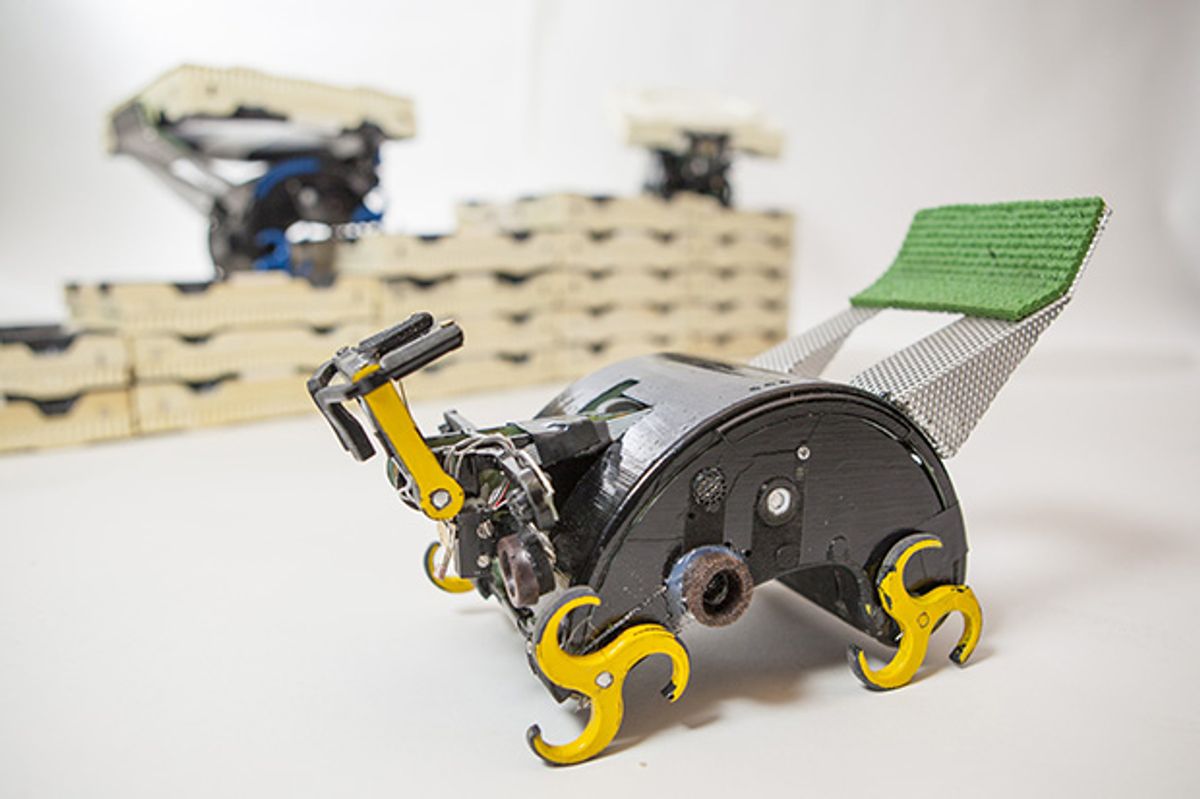In June of 2011, we introduced you to the TERMES Project from Harvard. Modeled after some of nature's most prolific and talented builders (at least, prolific and talented relative to their size), the TERMES robots are very simple, but are capable of working together to build relatively complex structures over time, using a simple set of rules that don't require any centralized command or control. The TERMES Project has now, after four years, come to a close, with a final update and a paper in Science.
To recap, these robots are a swarm in the sense that there's a bunch of them all working on the same project, but on the other hand each acts independently, coordinating their work through their shared environment. So they're not like a colony where a robot queen (or other overseeing entity) directs them to do what they do; rather, each robot has an idea in its little head of what structure it's trying to build, and will drop its building block wherever it finds a space in need of one. It'll avoid other robots while doing this, but otherwise ignore them. It might look a little bit haphazard, but it's effective, and you save a lot of complicated infrastructure that would be required to coordinate your robots to operate in a more hierarchical fashion.
There are other advantages to a decentralized system like this: you can build the same structure with one robot or a million robots, it'll just take a little (or a lot) longer or shorter to do so. If a robot croaks, it doesn't matter, and you can add or remove robots as you see fit without messing up your build plans.
So what's new to report as the project ends? When we last checked in with TERMES, they'd been working on "an algorithmic approach to constructing desired structures using decentralized rules," which means being able to tell a computer what sort of structure you want, and having the computer figure out what sets of simple rules the robots all need to obey to make it happen. The video above shows that in practice, which is cool to actually see, although we're kind of hoping that the project will continue in some form, at least long enough to see these little robots build a replica of the pyramids or something. It'll take 'em a while, but they're robots, let's just do it anyway.
[ Harvard ]
Evan Ackerman is a senior editor at IEEE Spectrum. Since 2007, he has written over 6,000 articles on robotics and technology. He has a degree in Martian geology and is excellent at playing bagpipes.



